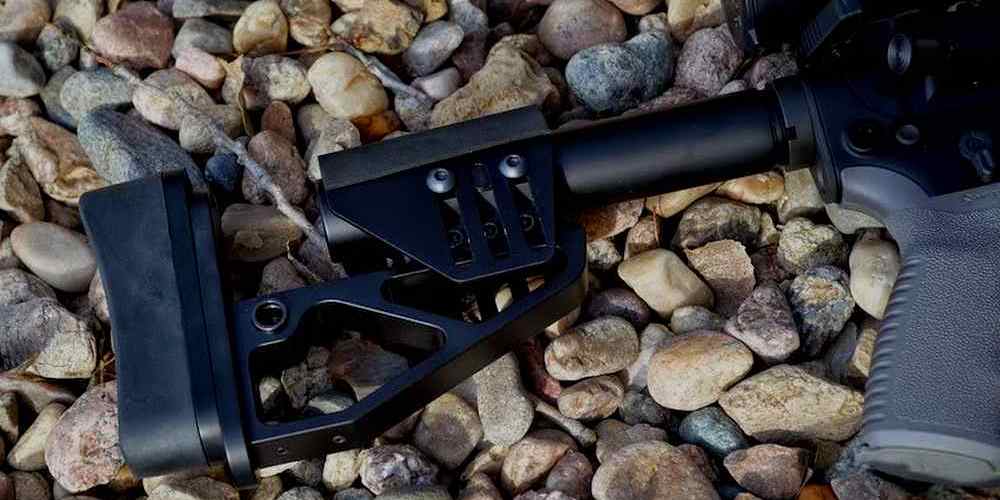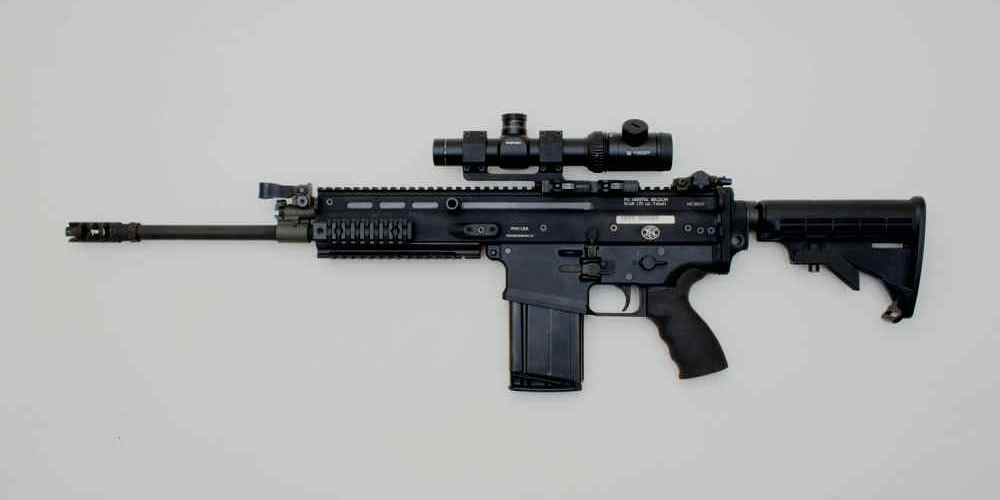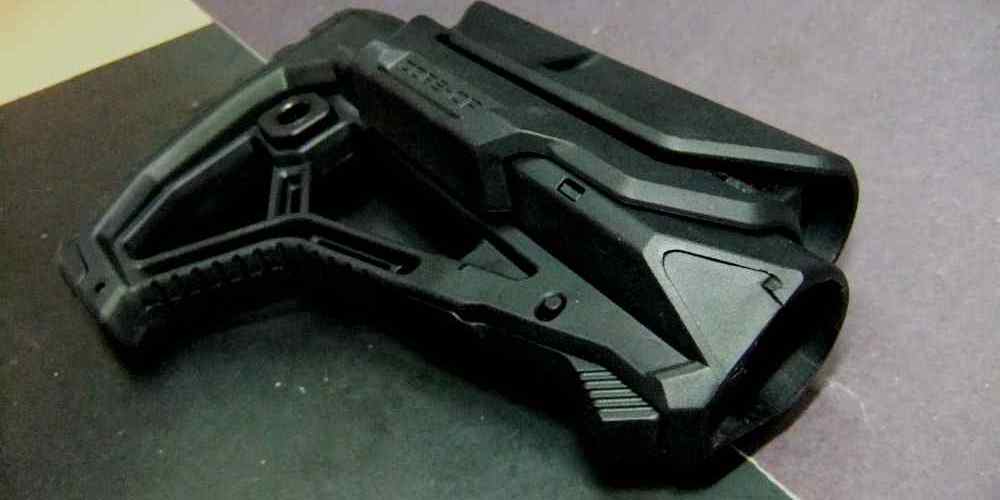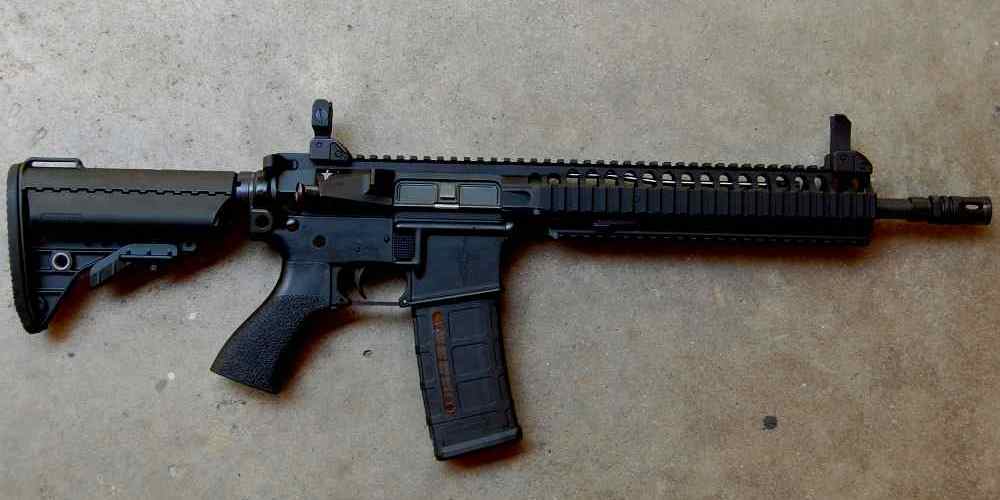Enhanced grip and recoil reduction for improved shooting performance.
Increased Recoil Absorption
Rubberized stocks have become a popular choice among AR15 owners looking to improve their shooting experience. One of the main advantages of rubberized stocks is their ability to absorb recoil, making shooting more comfortable and reducing fatigue during extended shooting sessions.
When firing a high-powered rifle like the AR15, recoil can be a significant factor that affects accuracy and shooting performance. Rubberized stocks help to mitigate this recoil by absorbing some of the energy generated when the gun is fired. This can make shooting more enjoyable and less physically taxing, especially for those who shoot frequently or for long periods of time.
In addition to reducing recoil, rubberized stocks can also help improve accuracy by providing a more stable shooting platform. The rubber material helps to dampen vibrations and reduce muzzle jump, allowing shooters to maintain better control over their shots. This can be particularly beneficial for precision shooting or when shooting at longer distances where even small movements can have a big impact on accuracy.
Another advantage of rubberized stocks is their ability to provide a more secure grip on the rifle. The rubber material is inherently grippy, which can help prevent the gun from slipping in the shooter’s hands, especially in wet or sweaty conditions. This can be particularly important for tactical or competitive shooters who need to maintain a firm grip on their weapon at all times.
Despite these benefits, there are some potential drawbacks to consider when using a rubberized stock on an AR15. One of the main concerns is durability, as rubberized stocks may not be as rugged or long-lasting as traditional synthetic or wooden stocks. The rubber material can be prone to wear and tear over time, especially with heavy use or exposure to harsh environmental conditions.
Additionally, some shooters may find that rubberized stocks can be more difficult to clean and maintain compared to other types of stocks. The textured surface of the rubber material can trap dirt and debris, requiring more frequent cleaning to keep the stock in good condition. This extra maintenance may be a hassle for some shooters who prefer a low-maintenance setup.
In conclusion, rubberized stocks offer several advantages for AR15 owners, including increased recoil absorption, improved stability, and a more secure grip. These benefits can help make shooting more comfortable and enjoyable, especially for those who shoot frequently or for long periods of time. However, it’s important to weigh these benefits against the potential drawbacks, such as reduced durability and increased maintenance requirements. Ultimately, the decision to use a rubberized stock will depend on the individual shooter’s preferences and priorities.
Enhanced Grip and Stability
Rubberized stocks have become increasingly popular among AR15 owners looking to enhance their grip and stability while shooting. These stocks are designed to provide a more comfortable and secure hold on the rifle, ultimately improving accuracy and control. However, like any firearm accessory, rubberized stocks come with their own set of pros and cons that AR15 owners should consider before making a purchase.

One of the main advantages of rubberized stocks is the enhanced grip they provide. The rubber material used in these stocks offers a textured surface that helps prevent slippage, even in wet or sweaty conditions. This can be especially beneficial for shooters who engage in competitive shooting or tactical training where a secure grip is essential for quick and accurate shots.
In addition to improved grip, rubberized stocks also offer increased stability when shouldering the rifle. The rubber material absorbs some of the recoil generated by the firearm, reducing felt recoil and muzzle rise. This can help shooters maintain better control of their AR15, allowing for faster follow-up shots and improved overall performance.
Another benefit of rubberized stocks is their shock-absorbing properties. The rubber material helps dampen the impact of the rifle against the shooter’s shoulder, reducing fatigue and discomfort during extended shooting sessions. This can be particularly advantageous for hunters or target shooters who spend long hours at the range or in the field.
Despite these advantages, there are some drawbacks to consider when using rubberized stocks on an AR15. One potential downside is the added weight that comes with the rubber material. While this may not be a significant issue for some shooters, those who prioritize a lightweight and maneuverable rifle may find the extra weight of a rubberized stock to be a drawback.
Another consideration is the potential for wear and tear on the rubberized surface over time. Extended use and exposure to the elements can cause the rubber material to degrade, leading to a loss of grip and stability. Regular maintenance and care can help prolong the life of a rubberized stock, but some shooters may prefer a more durable alternative.
In conclusion, rubberized stocks offer several benefits for AR15 owners looking to improve their grip and stability while shooting. The enhanced grip, stability, and shock-absorbing properties of these stocks can help shooters achieve better accuracy and control with their rifles. However, it is important to weigh these advantages against the potential drawbacks, such as added weight and wear and tear on the rubber material.
Ultimately, the decision to use a rubberized stock on an AR15 will depend on the individual shooter’s preferences and priorities. Some may find the benefits of improved grip and stability to outweigh any potential drawbacks, while others may prefer a different type of stock for their rifle. Regardless of the choice made, it is important for AR15 owners to carefully consider the pros and cons of rubberized stocks before making a purchase.
Durable and Weather-Resistant
Rubberized stocks have become increasingly popular among AR15 owners due to their durability and weather-resistant properties. These stocks are designed to withstand harsh conditions and provide a comfortable shooting experience for the user. However, like any product, there are both pros and cons to consider before making the investment in a rubberized stock for your AR15.
One of the main advantages of rubberized stocks is their durability. These stocks are made from high-quality materials that can withstand heavy use and abuse without showing signs of wear and tear. This makes them ideal for use in rugged environments where traditional stocks may not hold up as well. Whether you are hunting in the woods or participating in a tactical training exercise, a rubberized stock can provide the reliability and longevity you need.
In addition to their durability, rubberized stocks are also weather-resistant. This means that they can withstand exposure to rain, snow, and other elements without becoming damaged or compromised. This is especially important for outdoor enthusiasts who may find themselves in unpredictable weather conditions while using their AR15. With a rubberized stock, you can have peace of mind knowing that your firearm will continue to perform at its best regardless of the weather.
Another benefit of rubberized stocks is their comfortable grip. The rubberized material provides a non-slip surface that allows for a secure hold on the firearm, even in wet or sweaty conditions. This can help improve accuracy and control while shooting, making it easier to hit your target consistently. Additionally, the cushioned feel of a rubberized stock can reduce felt recoil, making shooting more comfortable and enjoyable for the user.
Despite these advantages, there are some drawbacks to consider when it comes to rubberized stocks. One potential downside is the added weight that comes with this type of stock. Rubberized stocks are typically heavier than traditional stocks, which can affect the overall balance and handling of the firearm. This may not be a significant issue for some users, but it is something to keep in mind if you are looking to minimize the weight of your AR15.
Another potential drawback of rubberized stocks is their cost. These stocks tend to be more expensive than traditional stocks due to the high-quality materials and manufacturing processes involved. While the durability and weather-resistant properties of a rubberized stock may justify the higher price for some users, others may find it difficult to justify the added expense.
In conclusion, rubberized stocks offer a range of benefits for AR15 owners, including durability, weather resistance, and a comfortable grip. However, there are also drawbacks to consider, such as added weight and cost. Ultimately, the decision to invest in a rubberized stock will depend on your individual needs and preferences as a shooter. If you value reliability and performance in all conditions, a rubberized stock may be worth the investment for your AR15.
Added Weight and Bulk
Rubberized stocks have become a popular choice among AR15 owners looking to improve their shooting experience. These stocks are designed to provide a more comfortable and secure grip, reducing recoil and improving overall accuracy. However, there are some drawbacks to consider when choosing a rubberized stock for your AR15.
One of the main drawbacks of rubberized stocks is the added weight and bulk they bring to your rifle. While the rubber material provides a comfortable grip, it also adds extra heft to your firearm. This can be a concern for shooters who prioritize a lightweight and maneuverable weapon.
The added weight of a rubberized stock can affect the balance of your AR15, making it feel front-heavy and less agile. This can be particularly problematic for shooters who engage in fast-paced shooting sports or need to quickly transition between targets. The bulkiness of a rubberized stock can also make it more difficult to store and transport your rifle, especially if you need to carry it for long distances.
Despite these drawbacks, there are some benefits to having a rubberized stock on your AR15. The rubber material provides a non-slip grip, even in wet or sweaty conditions, which can improve your control over the firearm. This can be especially useful for shooters who compete in outdoor competitions or hunt in challenging environments.
Additionally, the rubberized material can help reduce felt recoil, making shooting more comfortable and less fatiguing. This can be a significant advantage for shooters who spend long hours at the range or engage in high-volume shooting activities. The reduced recoil can also improve your accuracy by allowing you to maintain better control over your rifle during rapid fire.
When considering whether to invest in a rubberized stock for your AR15, it’s important to weigh the pros and cons carefully. If you prioritize comfort and control over weight and bulk, a rubberized stock may be the right choice for you. However, if you value a lightweight and agile firearm, you may want to explore other stock options.
Ultimately, the decision to use a rubberized stock on your AR15 comes down to personal preference and shooting style. Some shooters may find that the benefits of improved grip and reduced recoil outweigh the drawbacks of added weight and bulk. Others may prefer to stick with a more traditional stock design for a lighter and more maneuverable firearm.
In conclusion, rubberized stocks offer a number of benefits for AR15 owners, including improved grip and reduced recoil. However, they also come with drawbacks such as added weight and bulk. It’s important to carefully consider your shooting needs and preferences before deciding whether a rubberized stock is right for you.
Potential for Cracking or Damage over Time
Rubberized stocks have become a popular choice among AR15 owners due to their comfortable grip and shock-absorbing properties. However, like any firearm accessory, there are both pros and cons to consider before making a purchase. One potential downside of rubberized stocks is the possibility of cracking or damage over time.
Rubberized stocks are typically made from a combination of rubber and polymer materials, which can provide a soft and cushioned feel when shouldering the rifle. This can be especially beneficial for those who spend long hours at the range or in the field, as it can help reduce fatigue and discomfort. Additionally, the rubberized texture can provide a more secure grip, even in wet or slippery conditions.
However, despite these benefits, rubberized stocks are not without their drawbacks. One of the main concerns with rubberized stocks is the potential for cracking or damage over time. The rubber material can degrade and become brittle with exposure to harsh environmental conditions, such as extreme temperatures or prolonged sunlight. This can lead to cracks or tears in the rubber, compromising the integrity of the stock and potentially affecting the performance of the rifle.
To mitigate the risk of cracking or damage, AR15 owners should take proper care of their rubberized stocks. This includes storing the rifle in a cool, dry place when not in use, and avoiding prolonged exposure to direct sunlight. Additionally, regular cleaning and maintenance can help prolong the life of the rubberized stock and prevent any potential issues from arising.
Another factor to consider when it comes to the potential for cracking or damage is the level of use and abuse the rifle will endure. If the AR15 is primarily used for recreational shooting or hunting, the risk of damage may be minimal. However, for those who use their rifle for competitive shooting or tactical training, the increased wear and tear on the stock may accelerate the degradation process.
In conclusion, while rubberized stocks offer a comfortable and secure grip for AR15 owners, there is a potential for cracking or damage over time. By taking proper care of the stock and being mindful of environmental conditions, AR15 owners can help prolong the life of their rubberized stock and avoid any potential issues. Ultimately, the decision to invest in a rubberized stock should be weighed against the potential benefits and drawbacks, and each individual shooter should consider their specific needs and preferences before making a purchase.







